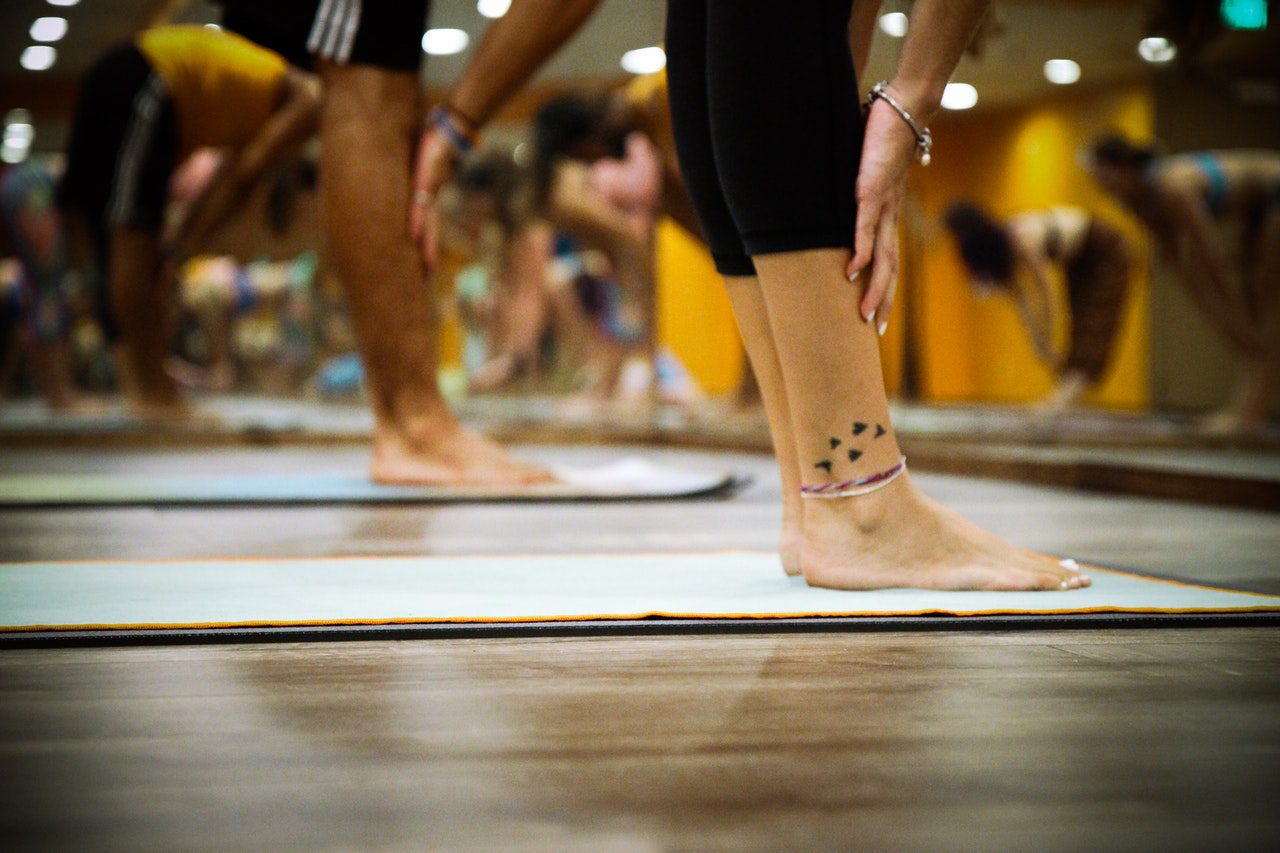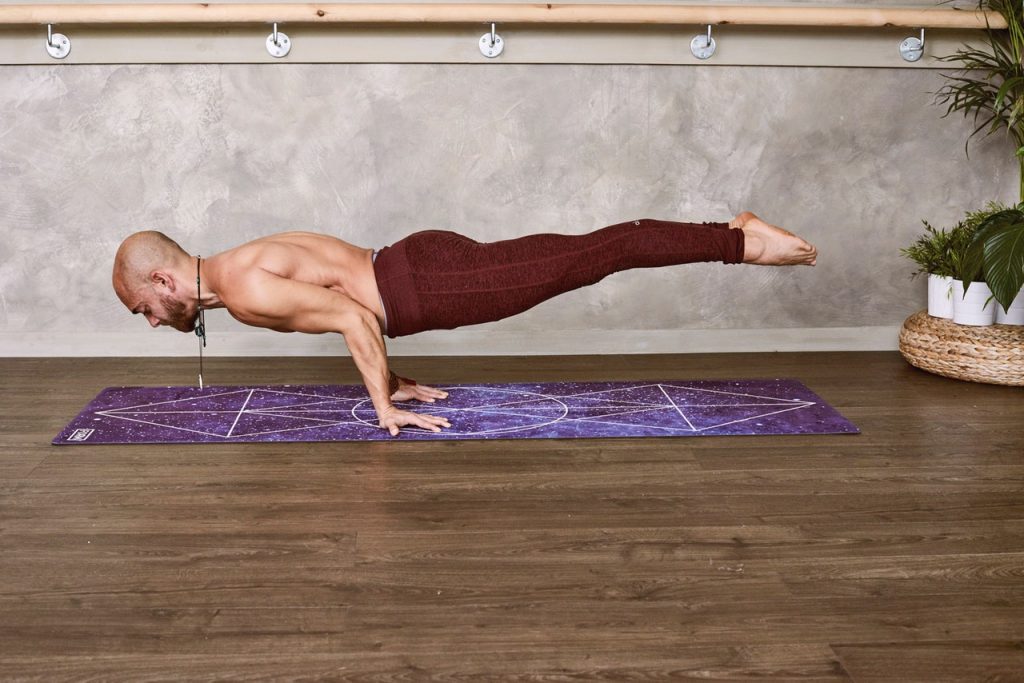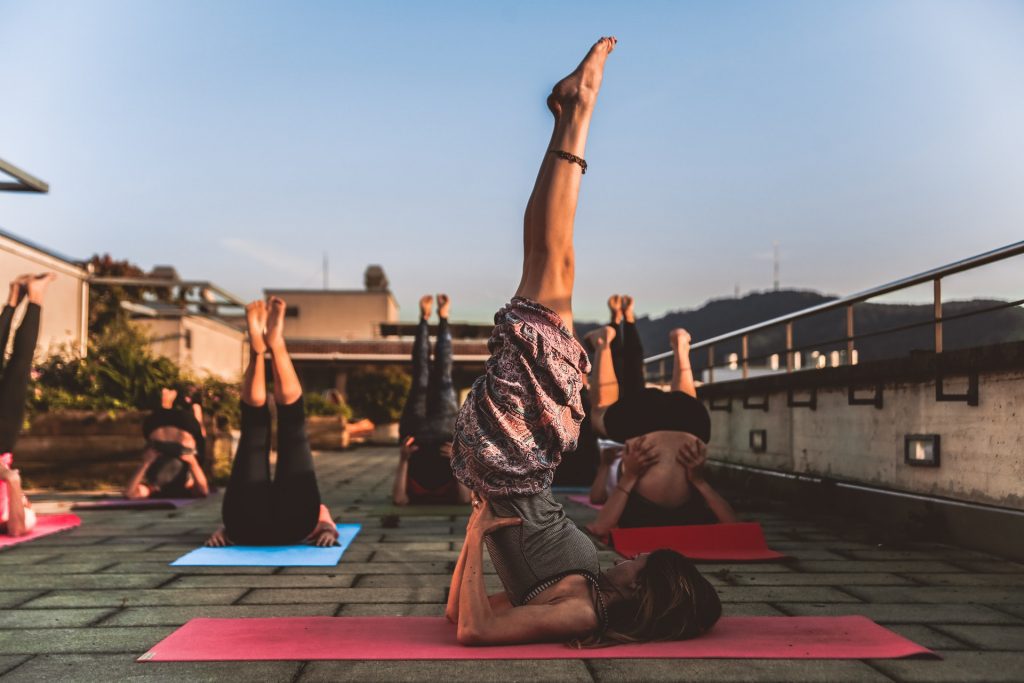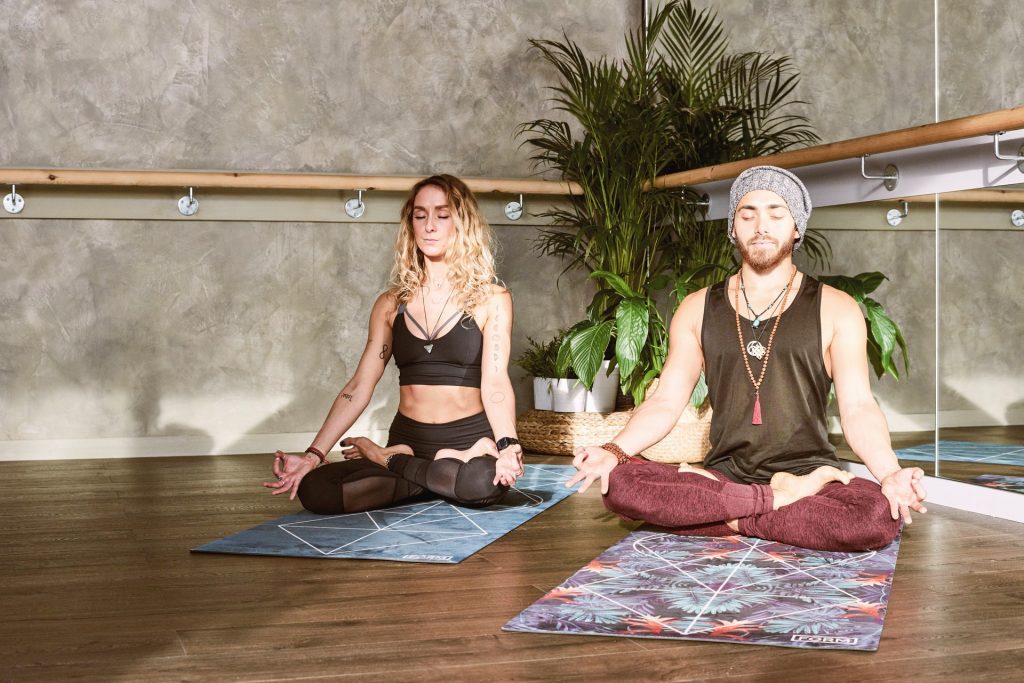
The best online fitness resource you'll ever need. We filter out the BS to ensure you meet your health and fitness goals!

The best online fitness resource you'll ever need. We filter out the BS to ensure you meet your health and fitness goals!

CrossFit is a fantastic sport, it builds strength, develops speed and power and builds a strong community amongst its participants. Many CrossFit boxes do place an emphasis on mobility (some may even have specific mobility classes) however, a common complaint with CrossFit is that mobility and flexibility are lacking. Cue Yoga! Yoga has been labeled as the perfect “yin” to balance the high intensity “yang” of CrossFit training.
Yoga can help with:
Through yoga we can learn how to employ our strength in a different manner, and in contrast to CrossFit, how to be super gentle and effortless in all movements. Yoga has the potential to advance all aspects of physical performance, from stamina to pace, while also encouraging general health and wellness.
Practitioners of CrossFit and Yoga are seeing that this combination of modalities promotes increased performance in both. More and more professional CrossFit athletes are including yoga as part of their routine. They have noted that it helps to enhance performance, recovery and mindset.
Flexibility is a crucial element of a well-rounded fitness routine that is often left unnoticed, specifically by those who tend to gravitate towards strength-based training. In order to correctly execute loaded movements, it is very important to work on gaining a full range of motion around your joints. Yoga practice helps to develop joint stability and focuses on mobility work, which will help to tackle muscular imbalances and allow for superior ease and proficiency when carrying out any activity.
Yoga is a complete workout for the whole body (and mind), and it helps to develop an enhanced range of motion in all joints. Irrespective of what sport you practice everyone has overworked muscle groups. Yoga works to strengthen underused muscles and to release overburdened muscles.
CrossFit athletes require a good level of flexibility to move with ease through some of the more complex movements. Adding yoga into your routine can help to progressively increase your range of movement in a gradual, controlled way. Working on improving flexibility and mobility will help to take your back squats, overhead squats, snatches, full range ring dips and many other movements to the next level.

CrossFit requires a super strong core. Yoga is a brilliant tool for building core strength, it works on your core muscles at a low intensity, through complex movement patterns and teaches practitioners to use the breath thus re-enforcing how to use your entire body correctly.
Yoga challenges your core strength by working on poses that demand balance and stability, these include standing poses, twists, inversions and balance work. Additionally, it teaches us to use and engage our core through dynamic movements, an indispensable skill for all athletes.
Practicing yoga will help you to take inventory of your body, it teaches you to become more aware of how your body feels every day, or simply when moving from pose to pose. The more aware you are the more likely you are to notice any tightness or stiffness that requires a little attention and could help to stake off an injury.
Yoga classes typically work through a combination of both passive and active stretches, which is a great combination to keep you injury free. The goals of CrossFit training, to work on strength or speed, can often lead to tight muscles with a limited range of motion, this can be a recipe for injuries.
Active stretching, where we move dynamically through poses (Sun Salutations for example), generates warmth and mobility in the tissues. Passive stretching refers to when you hold a position for a longer period of time which allows your muscles to lengthen. The result of this combination is more flexible tissues that help you to deal better with the stresses CrossFit places on your body.
Yoga can drastically reduce the risk of injury, by working on both body mechanics and awareness. Consistent practice can maintain healthy and flexible joints and muscles.
CrossFit training involves a number of complex movements, take the walking lunge with an overhead kettlebell for example. This is a difficult exercise, not purely from a strength standpoint, but also from a balance and coordination perspective. This drill requires a weight to be carried through a smooth, walking motion, whilst keeping your core tight, working on breath and keeping the weight overhead. This requires good balance, and more importantly control.

Yoga works on precisely these facets of balance. Poses are held for a certain length of time (developing strength and working on breath) and the goal is to move gracefully from pose to pose with control. Through yoga we can work towards a better awareness of our bodies, this includes balance, stability and proprioception. The results of this are better performance, and more importantly, efficiency.
One of the aims of breathwork in yoga (also known as Pranayama) is to teach us to choose the relaxation response as opposed to the stress response. Deep breathing can slow our minds and bodies down and can serve to soothe anxiety. This is a great tool for CrossFitters who are struggling mid-WOD to push through. Focusing on the breath allows you to push through the uncomfortable moments.
Yoga teaches us to work with our breath to quiet our nervous system which in turn allows us to hone all our focus on the task at hand. Breath works to oxygenate your muscles and soothe your mind. If you’re trying to move deeper into your splits or complete one more Snatch – the way that you breathe matters.
In addition to helping to calm us down, working on our breath can increase our respiratory capacity, which is invaluable for all athletes.
Exercise comes in many shapes and sizes, some regimes are higher intensity and more challenging, some are more restorative, but they all provide their own distinctive benefits. Yoga is one of the exceptional forms of exercise that encompasses strength, flexibility and cardiovascular work. CrossFit defines itself as constantly varied and requires its athletes to have wide ranging skill sets. Adding yoga to your weekly schedule will boost the ability to cover different training styles and regimens.
Yoga is an asset to athletes. It offers a great opportunity for cross training, works on core strength and proprioception, promotes recovery and refines mental focus. However, not all yoga classes are the same! There are many different styles, from sweaty and fast paced Vinyasa or Power yoga to relaxing, peaceful Yin. There is not one specific type of yoga that apt for athletes, this can vary based on your sport, your body type and your needs. Choose a style of yoga based on your goals.

Here is a quick round up of the most common styles:
A rigorous and demanding style of yoga, Ashtanga follows a set series of poses, and links every movement to the breath. Ashtanga practice begins with sun salutations and moves onto standing postures. This practice is more suited to advanced yoga practitioners.
Hatha yoga is a broad term that implies any style of yoga that works on the physical poses. However, when a class is marked as Hatha, it tends to be a gentler introduction to the most basic yoga poses. This is not a high-intensity sweaty class, but rather one that will leave you feeling, looser and more relaxed. Hatha classes are a great option for beginners, or even more advanced yogis looking to refine technique.
Hot yoga is not a specific style of yoga but refers more to the temperature of the studio. While it is typically not as hot as a Bikram studio, you should still expect to sweat buckets! Hot yoga is said to have many benefits, including detoxification.
Bikram yoga is a style of yoga disseminated by Bikram Choudhury in California in the 1970s. The patented practice follows a set sequence of twenty six postures over a ninety-minute class. Bikram studios are heated to 105 degrees Fahrenheit (41 degrees Celsius).
Iyengar (created and spread by B.K.S. Iyengar) is a very detailed style of yoga, with extreme attention paid to correct alignment in poses. Typically, Iyengar yoga uses many yoga props – blocks, straps, blankets, chairs, bolsters etc. With the emphasis on alignment and precision, Iyengar yoga is a great style for people working through injuries, or those who need to work gently and methodically.
Yin or Restorative yoga is a phenomenal way to unwind your body and nervous system. Classes use bolsters, blocks and blankets to help students get comfortable in passive poses allowing the body to reap the benefits of a pose without having to exercise any effort. Most poses are seated and held for fairly long periods of time. A great style for people with limited mobility or injuries, additionally a complementary training or form of active recovery for athletes as it soothes both body and mind.
Vinyasa classes are known for their fluid, continuous and intense flows. Vinyasa styles will vary from teacher to teacher and can also be referred to as flow, dynamic or power yoga. It tends to be a very athletic and challenging practice.
Downward facing dog is a super beneficial posture for CrossFitters! It helps to stretch out shoulders, hamstrings, calves and wrists. If you struggle with extremely tight calves post box jumps this is a great active stretch. Performed correctly it can improve shoulder strength and lats engagement.
The essential posture for lower body release. Pigeon pose help to release hips and thigs and will help you get further into squats and lunges.
A fantastic exercise to loosen your back, neck and even core post WOD! The flow helps to increase flexibility in the neck, shoulders and spine, as well as stretching the muscles in your hips, back and abdomen. The ultimate post-thruster drill!!
The warrior poses in yoga focus on correct alignment. Your risk of injuries in any sport are skyrocketed if you don’t have correct alignment. Proper positioning allows you to work at maximum efficiency.
Bridge pose can help to work on your posture. It helps to strengthen the back muscles that surround the spine. This in turn can help to realign your spine. Bridge pose also offers the practitioner a great and simple way to open the hip flexors and psoas, which is key for maintaining a healthy back. Bridge pose also works actively on opening the chest.
Plank is a brilliant exercise for working on strength and stability in both the core and shoulder girdle. The plank is one of the best poses for core strength and should form part of your staple routine to ensure safe movements in CrossFit.
Play around with the plank, start with basic high or low plank, move on to side planks, and forearm planks. You can even add in an element of balance too by lifting a hand or foot of the ground, or even both (alternate).
A basic movement and possibly one of the best postures to kickstart your cool down with after any workout. Serving to release the hamstrings and stretch out the spine, a simple standing (or seated) forward fold is one of the greatest and simplest moves to help increase flexibility and mobility in these areas.
Counter to what you may have heard, it does not have to be CrossFit vs. Yoga. You can join both tribes and reap the health benefits from both. One is not better than the other, they are very different disciplines and the combination of the two can multiply your improvements in both.
CrossFit trains your body for strength and endurance, but this increased muscle mass can also lead to restricted mobility and tightness in the body. Yoga is a super effective and healing practice that can radically improve your range of motion when practiced regularly. Yoga combines strong postures and flows with breath work, forcing you to slow your mind and increase your focus. This helps to become more aware of what is going on with your body. You can apply this awareness to your workouts, allowing you to move more efficiently through them.
In a nutshell, yoga diminishes tightness and stress, improves your balance, body awareness and mental clarity, accelerates tissue repair and muscle recovery, and increases core strength.So, what are you waiting for? Add yoga into your weekly routine and see the benefits yourself.